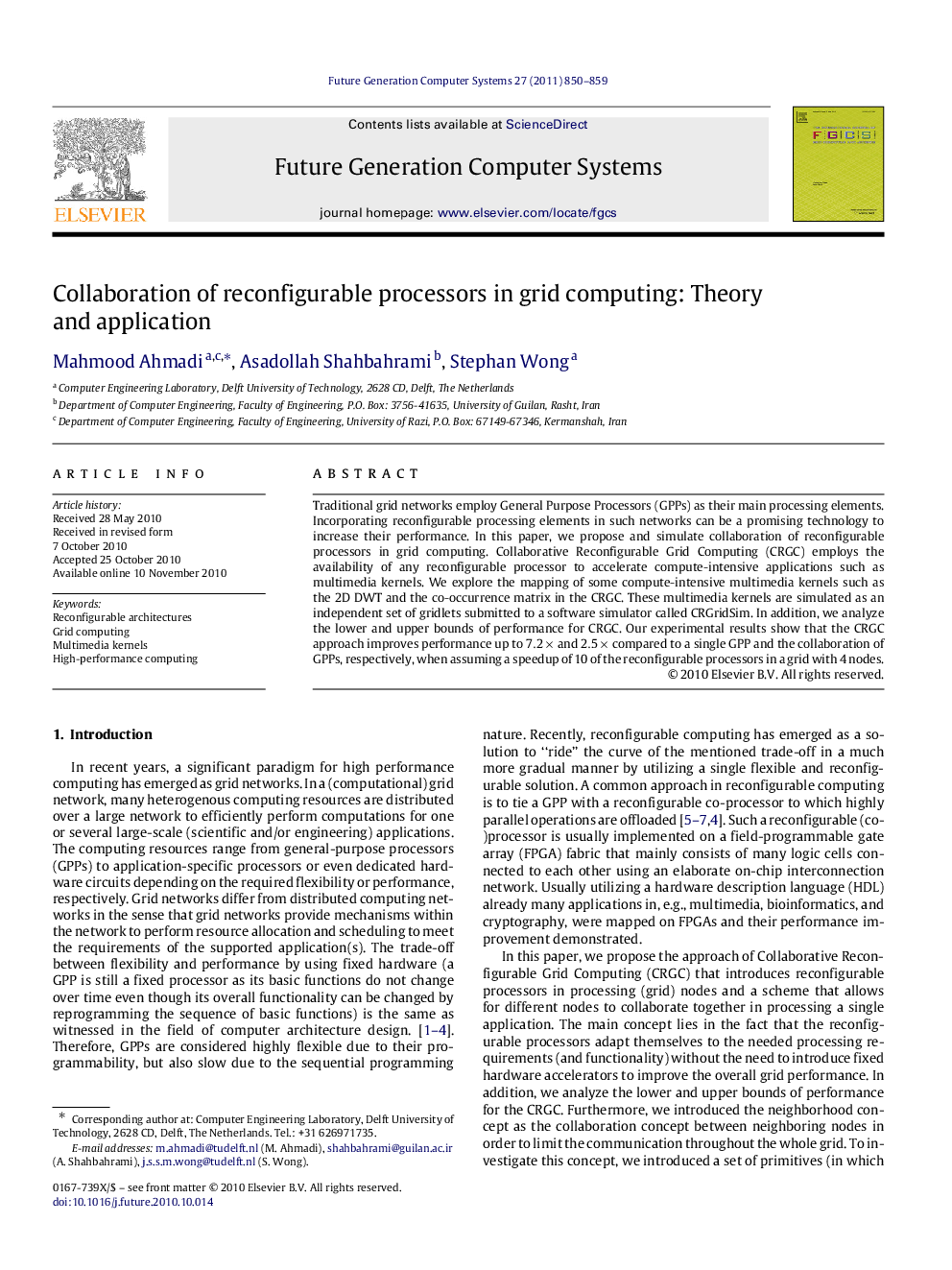| Article ID | Journal | Published Year | Pages | File Type |
|---|---|---|---|---|
| 426203 | Future Generation Computer Systems | 2011 | 10 Pages |
Traditional grid networks employ General Purpose Processors (GPPs) as their main processing elements. Incorporating reconfigurable processing elements in such networks can be a promising technology to increase their performance. In this paper, we propose and simulate collaboration of reconfigurable processors in grid computing. Collaborative Reconfigurable Grid Computing (CRGC) employs the availability of any reconfigurable processor to accelerate compute-intensive applications such as multimedia kernels. We explore the mapping of some compute-intensive multimedia kernels such as the 2D DWT and the co-occurrence matrix in the CRGC. These multimedia kernels are simulated as an independent set of gridlets submitted to a software simulator called CRGridSim. In addition, we analyze the lower and upper bounds of performance for CRGC. Our experimental results show that the CRGC approach improves performance up to 7.2×7.2× and 2.5×2.5× compared to a single GPP and the collaboration of GPPs, respectively, when assuming a speedup of 10 of the reconfigurable processors in a grid with 4 nodes.
Research highlights► Collaboration of reconfigurable processors in grid to achieve high performance. ► Proposal of a performance model analysis for the proposed approach. ► The extension of a grid simulator for the proposed approach. ► Mapping of several compute-intensive multimedia kernels based on neighborhood policy.
